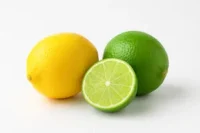A Comprehensive Guide to Understand the Different Growing Stages of Lavender
Published: 11 Oct 2025
Lavender is one of the most loved herbs for its color, scent, and beauty. Watching it grow is a wonderful experience for any gardener. In this guide, we will explore the growing stages of lavender step by step. You will learn how the plant starts from a small seed, grows strong stems and leaves, and finally blooms with bright, fragrant flowers. By the end, you will understand how to care for lavender through every stage of its growth.
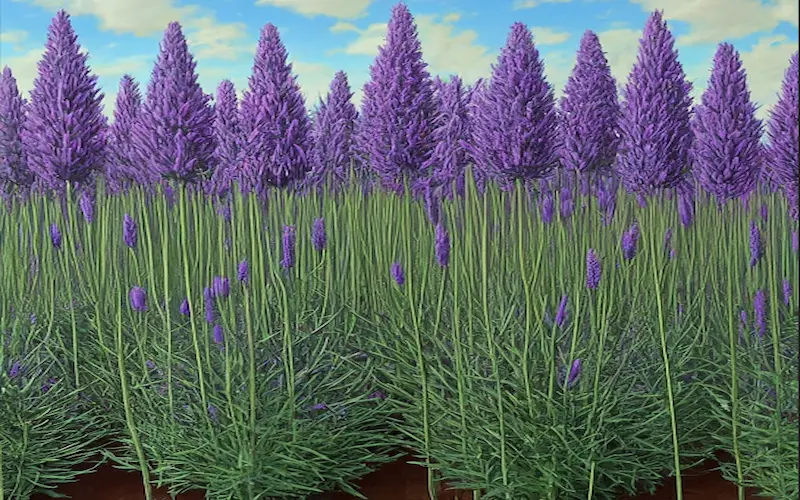
The life cycle of lavender involves several stages. The stages of lavender growth start from seed germination and then progress to seedling growth, followed by vegetative growth, budding, blooming, and seed formation. Each stage requires specific care to ensure healthy growth and abundant blooms. In this comprehensive guide, I’ll take you through different stages of growth, sharing insights I’ve gleaned from my own experiences and research.
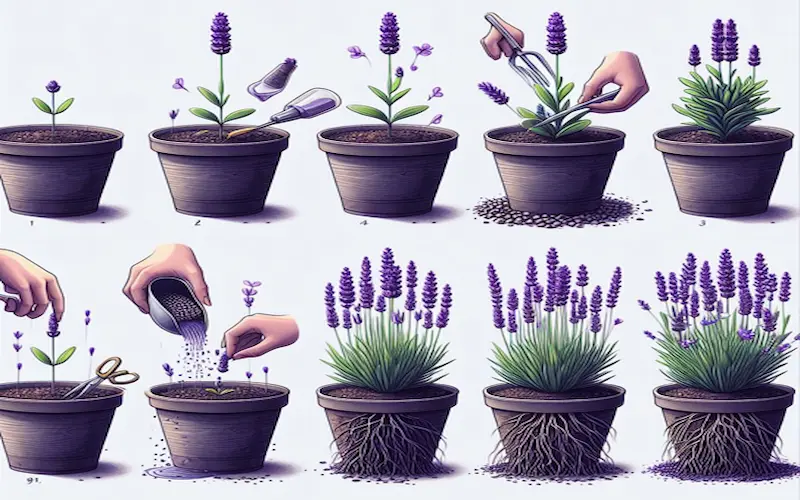
Germination stage of lavender growth
Growing lavender from seed
The germination stage marks the beginning of a lavender plant life cycle. My journey with germinating lavender began with choosing high-quality seeds and preparing a well-draining soil mix to provide the perfect cradle for new life.

Conditions for successful germination
Moisture, warmth, and light play pivotal roles during germination. Maintaining a consistent temperature of around 70°F (21°C) and ensuring the soil stayed moist but not soggy was vital in encouraging the seeds to sprout. It’s worth noting that lavender seeds require light to germinate, so sprinkling on the surface sufficed rather than burying them deep into the soil.
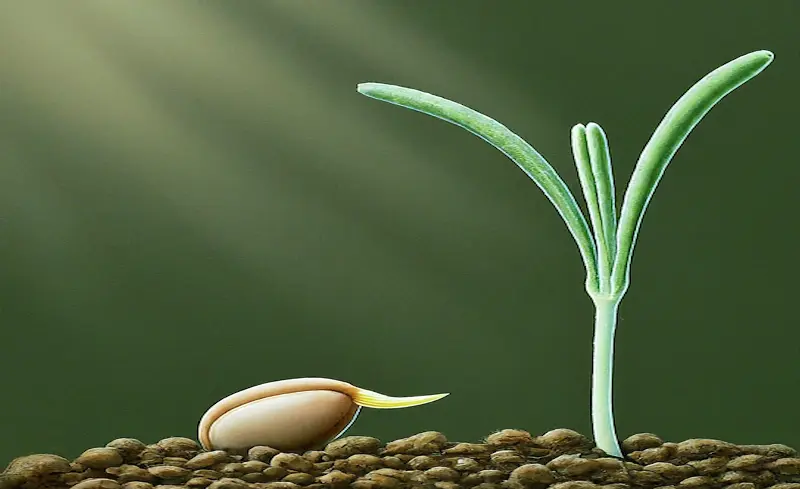
Time
It can take anywhere from two weeks to a month for lavender seeds to germinate. Over the years, I’ve learned to resist the urge to tamper with the soil or seeds during this waiting period. Instead, I focused on maintaining optimal conditions and observed the tiny miracles unfolding.
Lavender seedlings
Emergence of the first green shoots
When the first green shoots appeared, I knew my efforts during the germination stage were paying off. These delicate seedlings are the foundation upon which a robust and vibrant lavender plant will be built.
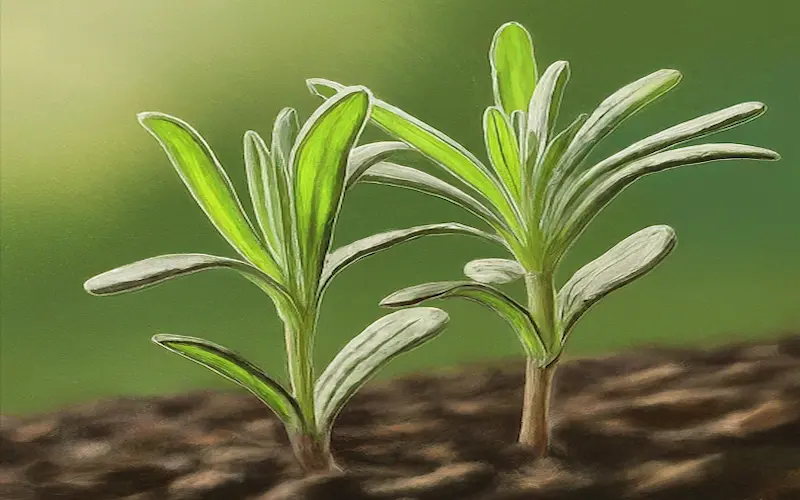
The growth of true leaves
As the seedlings mature, the first pair of true leaves develop. These leaves indicate the plant’s readiness to photosynthesize on its own. At this point, I gradually introduced the seedlings to more direct sunlight to strengthen them for the journey ahead.
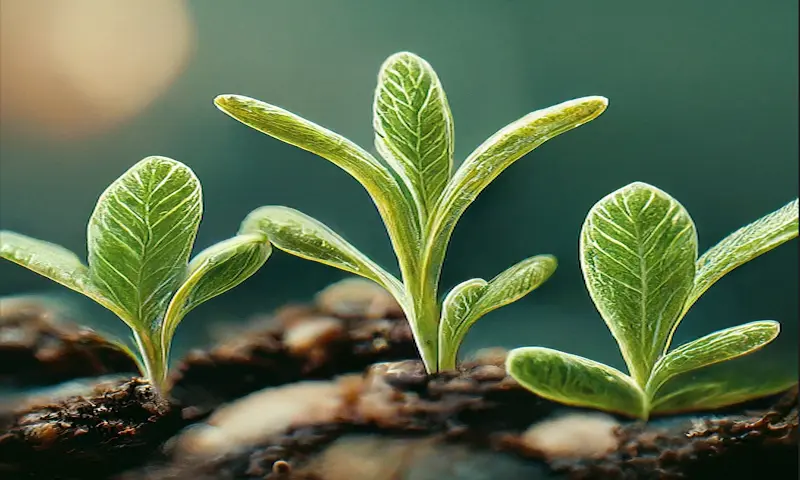
The importance of proper spacing
Crowding can harm seedlings, stifling their growth and making them susceptible to disease. I ensured proper spacing by thinning the weaker seedlings, leaving only the strongest to continue growing. This selective process was essential for developing robust plants with ample room to expand.
Vegetative stage of lavender growth stages
Root and foliage development
The vegetative stage is characterized by a focus on developing strong roots and lush foliage. This is when the plant’s energy is directed towards growing taller and producing more leaves. My lavender plants showed significant growth during this period, and I provided them with the proper nutrients and ample water to support their development.
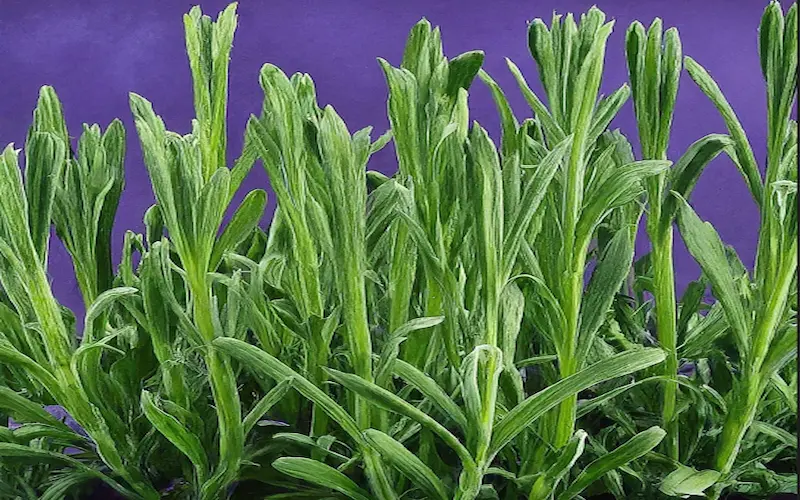
Preparing for future blooms
Although lavender plants won’t flower during the vegetative stage, this period lays the groundwork for future blooms. I learned that proper care during this time is crucial for ensuring a bountiful flowering stage. Regular pruning helped to promote bushier growth and prevented the plants from becoming leggy.

Transitioning to the flowering stage
As the days grew longer and the temperatures warmer, I could sense my lavender plants preparing for the next phase. The vegetative stage gradually led to the onset of budding, signalling the impending flowering stage. It was a reminder that each phase seamlessly transitions into the next when the plants are well cared for.
Lavender Flowering time
The arrival of lavender blossoms
The flowering stage is undeniably the most visually and aromatically pleasing phase. Seeing my garden awash with purple blooms and the air filled with their fragrance was a testament to the care invested in the previous stages. Lavender flowers attract bees and butterflies, adding to the garden’s vibrancy.

Lavender bloom time
Lavender bloom time depends on many factors like lavender types, climates and growing conditions. Some are blooming in early spring, late spring and early summer season.
Lavender reaches its peak blooming period in midsummer. The vibrant purple flowers stand tall and proud during this time, signalling the plant’s maturity. I took the opportunity to enjoy the garden blooms and collect some to dry for their fragrant oils.
A sign of a plant’s health
The flowering stage is not just about aesthetics; it’s also a sign of a plant’s overall health. Lavender that blooms abundantly is often a sign that it has been well-nurtured through its growth stages. The quality of the blooms can serve as an indicator for any adjustments needed in care routines. Once your lavender plants are fully grown and ready to harvest, you can use the fresh blooms in your kitchen too. Learn how to prepare, dry, and cook with edible varieties in our complete guide on Culinary Lavender. It’s a simple way to turn your homegrown lavender into delicious and fragrant dishes.
Lavender plant harvesting
Harvest time
The timing of the lavender harvest is critical. I aimed to gather the flowers when they were just about to reach full bloom, as this is when the essential oils are most potent. Cutting the stems early in the day, after the dew had evaporated but before the sun peaked, helped preserve the oils’ integrity.
Harvest methods
I used sharp, clean shears to make precise cuts, taking care not to damage the plant. Harvesting provided me with fragrant blossoms for various uses and encouraged new growth. The plants responded well to harvesting, often producing a second, albeit more minor, wave of blooms.
Post-harvest care
After the harvest, I focused on post-harvest care, which involved returning the plants by about a third. This pruning helped maintain the plants’ shape and prepared them for the cooler months. Proper post-harvest care ensured my lavender plants remained healthy and ready for the next growing season.
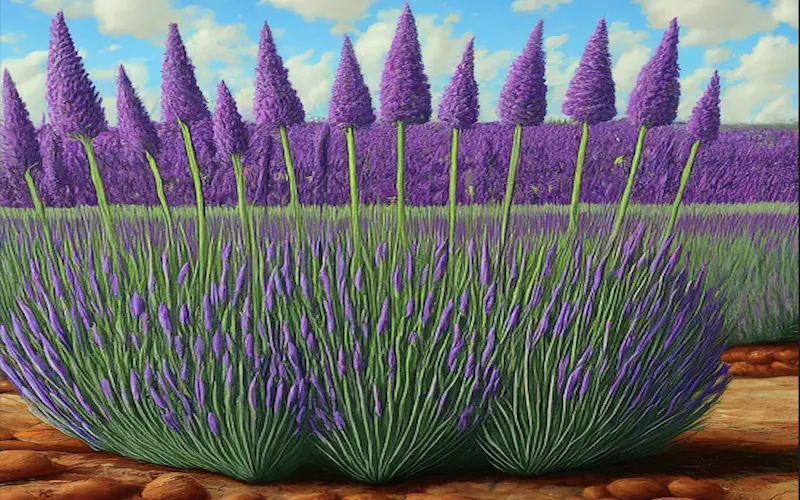
Factors affecting the stages of lavender growth
Climate and weather conditions
Throughout my gardening journey, I’ve learned that climate and weather conditions significantly impact the stages of lavender growth. Lavender thrives in a Mediterranean climate with ample sunshine and mild winters. Adaptations such as mulching or sheltering the plants can be necessary in areas with less ideal climates.
Soil type and composition
Soil quality is another critical factor in lavender growing stages. Lavender prefers well-draining soil with a neutral to slightly alkaline pH. I’ve had to amend my garden soil with sand and small gravel to improve drainage and occasionally adjust the pH to meet the plants’ preferences.
Pest and disease management
Pest and disease management is an ongoing concern. Lavender is relatively hardy but can still prey on issues like fungal infections or pest infestations. Proactive measures, such as proper spacing and avoiding overhead watering, effectively mitigate these risks.
Care tips for lavender plant growth stages
Germination and seedling care
During the germination and seedling stages, maintaining the proper environment is paramount. I’ve learned that gentle watering, adequate light, and warmth are the cornerstones of successful lavender seedling care. Patience during these stages must be balanced.
Vegetative stage maintenance
The vegetative stage requires a focus on nutrition and pruning. I’ve made it a point to fertilize my lavender plants with a balanced, slow-release fertilizer and to prune them to encourage bushy growth. Ensuring the plants have enough space to grow without competition is also essential.
Flowering and harvesting best practices
When it comes to the flowering and harvesting stages, timing is everything. I’ve honed my skills in identifying the optimal moment for harvesting to maximize the essential oil content. Post-harvest, I ensure my plants are pruned and shaped to promote healthy growth for the following year.
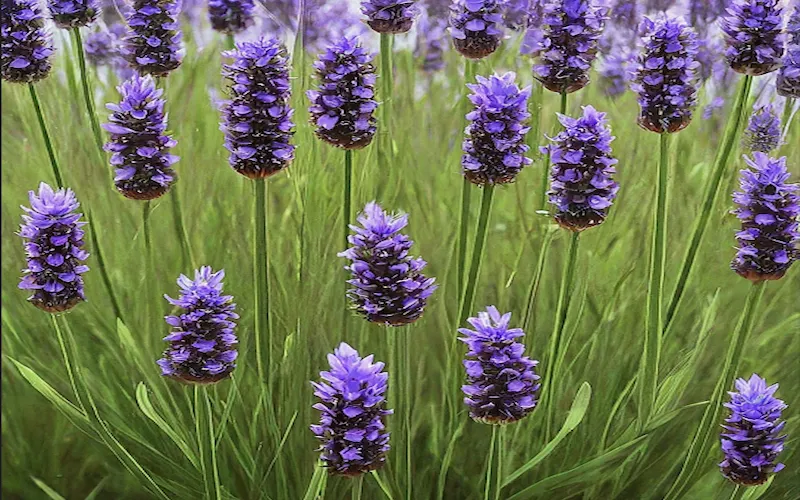
Common problems and solutions during lavender stages of growth
Dealing with slow germination
Slow germination can be disheartening, but it’s a common issue with lavender. To counteract this, I use fresh seeds and ensure the soil temperature is consistently warm. A heat mat can be a valuable tool for maintaining the ideal soil temperature during this stage.
Overcoming poor blooming
Poor blooming is often attributed to insufficient sunlight or overfertilization, leading to excess nitrogen. I’ve learned to place my lavender plants in an area that receives full sun and to use a balanced fertilizer sparingly. If blooming is still inadequate, assessing the plant’s age and overall health is necessary, as older plants may need replacing.
Addressing root rot and pests
Root rot and pests are common afflictions that can be adequately mitigated. Ensuring good drainage and air circulation has been my best defence against these issues. For pests, I’ve turned to natural solutions like neem oil and encouraged beneficial insects to help control the problem.
Question-related stages of lavender growth
The time it takes to grow can vary depending on various factors, such as the lavender variety, growing conditions, and the propagation method. Lavender typically takes about two years to mature and produce significant blooms fully.
Lavender can grow from seeds, cuttings, or seedlings. It takes about two years to reach full maturity, with germination taking 14 to 21 days. The first year focuses on root development, and by the second year, the plant reaches full height (2-3 feet) and blooms in late spring or early summer. Regular pruning encourages bushier growth
Lavender typically blooms in late spring to early summer, usually from June to July, depending on the specific variety and local climate conditions. The timing of blooming can vary slightly based on factors such as geographical location, temperature, and daylight duration
When fully grown, lavender is a compact and bushy shrub with distinctive narrow, linear leaves and small, fragrant flower spikes. Here are some key features of fully-grown lavender:
1. Height: Depending on the variety, lavender plants can reach a height of about 1 to 3 feet (30 to 91 cm).
2. Foliage: The leaves are narrow, elongated, and usually grey-green or green-grey. They are arranged in opposite pairs along the stems.
3. Stems: Lavender stems are woody at the base and become more flexible toward the top. They often have a greyish appearance.
4. Flowers: Lavender flowers are arranged in spikes at the top of the stems. The individual flowers are small and tubular, forming clusters along the spikes. The colour of the flowers can vary and includes shades of purple, violet, blue, pink, or white.
5. Fragrance: One of the defining features of lavender is its aromatic fragrance. The plant releases a pleasant and soothing scent when fully grown and blooming.
Overall, fully-grown lavender is visually appealing with its vibrant flowers and silvery-green foliage. It offers a delightful fragrance, making it a popular choice for gardens, landscaping, and aromatherapy.
Conclusion
The lavender growth stages from seed to harvest are a journey filled with challenges and rewards. Each stage has taught me patience, care, and attentiveness. The growing stages of lavender are a beautiful reminder of the cycles of nature and the joys of gardening.
Understanding these stages can significantly enhance your experience with this beloved herb, whether you’re a seasoned gardener or a novice. With the proper knowledge and dedication, you, too, can cultivate a thriving lavender garden that will bring beauty and fragrance to your life for years.

- Be Respectful
- Stay Relevant
- Stay Positive
- True Feedback
- Encourage Discussion
- Avoid Spamming
- No Fake News
- Don't Copy-Paste
- No Personal Attacks



- Be Respectful
- Stay Relevant
- Stay Positive
- True Feedback
- Encourage Discussion
- Avoid Spamming
- No Fake News
- Don't Copy-Paste
- No Personal Attacks


